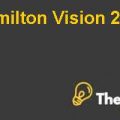
3. Why can Andina operate more successfully in Chile than in Brazil and Argentina? (20 marks)
Andina’s main functions started from Chile so it has established operations there. However, operations in Brazil and Argentina are relatively new and thus they require some time and efforts to get established. There are cultural lags between countries, as well.
Andina’s main business was the production and distribution of Coca-Cola soft drinks. Thus, the sales demand of the Coca-cola product affects operations of the company to a certain extent. The increasing trend of B-Brands and generic substitutes of Coca-Cola affected operations of Andina in Brazil and Chile.
External factors like economic situation, recession and political situations also result in the difference of the success level. The debt level and inflation were extremely high in Argentina. Since the company’s headquarter is in Chile, its sales amount is not affected by the exchange rate fluctuation. However, the risk increases when plants are geographically fragmented and dispersed. The culture at Chile is flexible and adaptive. They accept the change and find positive things in the implementation of the new system. The levelling of workload also resulted in better performance and operational efficiency.
The cost of raw material and distribution cost in every company was also very different. The geographic area of Argentina is mountainous and sparsely populated, thus the distribution cost is high for that area. The raw material cost is low in Chile but high in Brazil. This also results in successful operations of Chile as compared to other places.
The implementation started from Chile. It helped the company to re-define many processes for better operational results. ERP of Chile was then implemented in other counties, which created resistance to change in Brazil and Argentina. These countries had “not invented by me” syndrome. They had different work habits and thus they thought that they are being punished by the implementation of this control panel. Their reserved nature was the main hindrance that was causing operational inefficiencies in the system. They worked individually, not in teams.
4. Should Operations Management be centralised (Andina sets all targets for all operations) or decentralised (individual decision making)? (20 marks)
The centralized and de-centralized decision making processes have their own pros and cons. If a company uses a centralized decision making system, then it will have to bear more expenses in processing units whereas it becomes cheaper if that firm is de-centralized but it cannot incorporate and encourage cultural differences properly if a centralized decision-making is followed. In the de-centralized system, it becomes very difficult to collect data on time and even after many hard attempts, real time data cannot be extracted on which decisions might be taken. Thus, difference in the data retrieval may impact the performance management of the company which might translate into personal grudges between its different parts leading to the destructive environment. In a de-centralized system, it is very difficult to identify problems and failures. However, proper solutions that are culturally fit cannot be devised in a centralized system.
The nature of units at Andina is extremely diverse in relation to its culture, so it is better that the company chooses a de-centralized decision making. However, the de-centralized system has brought in many inefficiencies and lags in the operational system. Although, the of centralized system outweigh the other alternative but results of choosing this system alone can be hazardous. Thus, the company should use a hybrid system regarding decisions that are culturally different and where centralized decision making does not seem viable, de-centralized system should be followed. On the other hand, areas likes taking sales order, distribution network and processing system should be centralized to ensure unification of similar business processes and clear performance measurement system.
In this situation, the organization will be able to have centralized information and the management will remain de-centralized. This will be very productive for Andina because it will be able to promote discussion so that operations can be improved along with the adaptation of positive resources and capabilities in other areas to ensure maximum output. Managers at different levels will be able to compare results as a self-assessment process to improve their results and performances. Transparency will increase as human resource management and performance management will become easier............................
This is just a sample partial case solution. Please place the order on the website to order your own originally done case solution.













